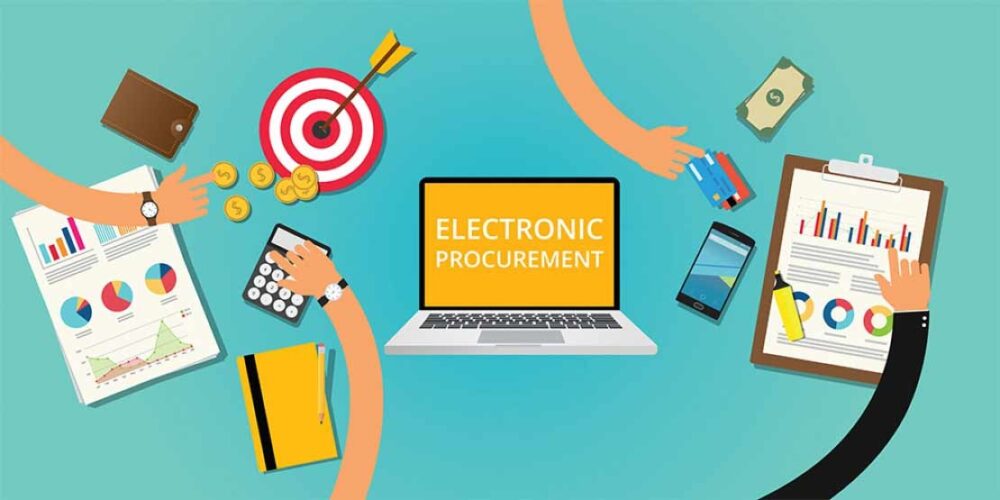Procurement Digital Transformation: A Comprehensive Guide
Introduction
Procurement digital transformation is the integration of digital technologies into procurement processes to improve efficiency, reduce costs, and enhance overall performance.
In today’s fast-paced business environment, digital transformation in procurement is essential for staying competitive and compliant.
This article will delve into the key aspects, benefits, challenges, and future trends of procurement digital transformation.
Key Drivers of Digital Transformation in Procurement
Technological Advancements
Emerging technologies such as Artificial Intelligence (AI), blockchain, and the Internet of Things (IoT) are revolutionizing procurement. These technologies streamline processes, enhance data accuracy, and provide real-time insights.
Market Competition
The competitive landscape pushes organizations to adopt digital procurement solutions to stay ahead. Efficient procurement practices are crucial for maintaining a competitive edge and meeting customer expectations.
Regulatory Compliance
Regulations and standards require companies to maintain transparent and efficient procurement processes. Digital tools help ensure compliance by providing better tracking, documentation, and reporting capabilities.
Globalization
The expansion of markets and the globalization of supply chains demand more sophisticated procurement strategies. Digital transformation helps manage the complexity of global operations.
Customer Expectations
Customers now expect faster, more reliable service. Digital transformation helps meet these expectations by improving procurement speed and accuracy.
Core Components of Procurement Digital Transformation
Automation and Efficiency
Automation reduces manual tasks, speeding up the procurement process and minimizing errors. Automated systems handle repetitive tasks like order processing and invoice management, freeing up time for strategic activities.
Data Analytics and Insights
Data-driven decision-making is at the heart of digital transformation. Advanced analytics tools provide valuable insights into spending patterns, supplier performance, and market trends, enabling better procurement strategies.
Supplier Relationship Management
Digital tools enhance supplier collaboration and communication. They enable efficient management of supplier information, performance tracking, and relationship building, leading to stronger partnerships.
Integration of Procurement Functions
Integrating procurement with other business functions such as finance, logistics, and operations ensures a seamless flow of information and enhances overall efficiency.
Cloud-Based Solutions
Cloud-based procurement solutions offer scalability, flexibility, and cost savings. They enable remote access to procurement data and systems, facilitating collaboration and decision-making.
Cybersecurity
With the increase in digital procurement activities, ensuring data security is crucial. Implementing robust cybersecurity measures protects sensitive procurement information from breaches and cyber-attacks.
Key Technologies in Procurement Digital Transformation
Artificial Intelligence and Machine Learning
AI and machine learning enhance procurement by predicting trends, optimizing sourcing decisions, and identifying potential risks. These technologies analyze vast amounts of data to provide actionable insights.
Blockchain Technology
Blockchain ensures transparency and security in procurement transactions. It provides a decentralized ledger that records every transaction, making it tamper-proof and easily auditable.
Cloud Computing
Cloud-based procurement solutions offer scalability, flexibility, and cost savings. They enable remote access to procurement data and systems, facilitating collaboration and decision-making.
Internet of Things (IoT)
IoT devices provide real-time tracking and monitoring of goods and services. They improve inventory management, asset tracking, and supply chain visibility, ensuring efficient procurement operations.
Robotic Process Automation (RPA)
RPA automates repetitive tasks such as data entry and order processing, reducing human error and increasing efficiency.
Advanced Analytics
Advanced analytics tools process large data sets to uncover trends, forecast demand, and optimize procurement strategies.
Chatbots and Virtual Assistants
AI-powered chatbots and virtual assistants handle routine inquiries and tasks, improving response times and freeing up procurement professionals for more complex activities.
Benefits of Digital Transformation in Procurement
Cost Reduction
Digital transformation helps cut costs by optimizing procurement processes, reducing manual errors, and improving supplier negotiations. Automation and analytics lead to significant savings.
Improved Efficiency
Enhanced efficiency is achieved through streamlined processes and reduced cycle times. Automation and digital tools ensure faster order processing, approval workflows, and payments.
Better Risk Management
Digital tools help identify and mitigate risks by providing real-time data and predictive analytics. They enhance visibility into supplier performance and market conditions, enabling proactive risk management.
Enhanced Compliance
Digital transformation ensures adherence to regulatory standards and internal policies. Automated systems provide accurate documentation, audit trails, and compliance reporting.
Increased Agility
Digital procurement systems enable organizations to adapt to market changes and disruptions quickly. This agility is crucial for maintaining continuity and competitiveness.
Enhanced Supplier Relationships
Digital tools improve communication and collaboration with suppliers, leading to stronger partnerships and better performance.
Greater Transparency
Digital systems provide a clear and detailed view of procurement activities, enhancing accountability and transparency.
Strategic Decision-Making
Procurement professionals can make more informed and strategic decisions with access to real-time data and advanced analytics.
Challenges in Implementing Digital Transformation
Resistance to Change
Organizational resistance can hinder digital transformation. Overcoming resistance involves change management strategies, employee training, and clear communication of benefits.
Data Security Concerns
Cybersecurity is a major concern in digital transformation. Implementing robust security measures and protocols is essential to protect sensitive procurement data.
Integration with Existing Systems
Integrating new digital tools with legacy systems can be challenging. Ensuring compatibility and seamless data flow requires careful planning and execution.
High Initial Costs
The initial investment in digital transformation can be high. However, the long-term benefits often outweigh the initial costs.
Skill Gaps
Implementing digital transformation requires new skills and expertise. Organizations may need to invest in training and development to bridge skill gaps.
Maintaining Data Quality
Ensuring high-quality data is critical for the success of digital procurement systems. Poor data quality can lead to inaccurate insights and suboptimal decisions.
Case Studies
Successful Digital Transformation Examples
Many companies have successfully implemented digital transformation in procurement. For instance, a global manufacturer streamlined its procurement processes using AI and blockchain, resulting in 30% cost savings and improved supplier relationships.
Another example is a retail giant that adopted cloud-based procurement solutions, enhancing efficiency and collaboration across its supply chain.
Lessons Learned from Failures
Learning from unsuccessful attempts at digital transformation can provide valuable insights. Common pitfalls include lack of clear strategy, inadequate change management, and insufficient training.
Future Trends in Procurement Digital Transformation
Emerging Trends
Future technologies like AI-powered chatbots, robotic process automation (RPA), and advanced analytics will continue to shape procurement. These innovations will drive further efficiencies and capabilities in procurement processes.
Impact on Global Supply Chains
Digital transformation will enhance global supply chain visibility, agility, and resilience. Companies will be better equipped to manage disruptions, optimize inventory levels, and respond to market changes.
Sustainability
Digital procurement solutions can support sustainability initiatives by providing insights into environmental impact and helping organizations make more sustainable sourcing decisions.
Personalized Procurement
AI and machine learning will enable more personalized procurement strategies, tailored to the specific needs and preferences of the organization.
Collaboration and Integration
Future trends will likely emphasize greater collaboration and integration across the supply chain, leveraging digital tools to create more connected and efficient ecosystems.
Conclusion
Procurement digital transformation is crucial for modern businesses aiming to enhance efficiency, reduce costs, and stay competitive.
By adopting digital tools and technologies, organizations can streamline their procurement processes, improve supplier relationships, and ensure compliance.
Embracing digital transformation today will drive future growth and success in the procurement landscape.
Frequently Asked Questions
Procurement digital transformation involves integrating digital technologies into procurement processes to improve efficiency, reduce costs, and enhance performance.
It is important because it helps organizations stay competitive, compliant, and efficient. Digital tools streamline processes, improve data accuracy, and provide valuable insights.
Technologies include AI, blockchain, cloud computing, and IoT, which enhance various aspects of procurement.
Challenges include resistance to change, data security concerns, and integration with existing systems.
Companies can start by assessing their current procurement processes, identifying areas for improvement, and choosing the right digital tools and technologies to address those needs.





